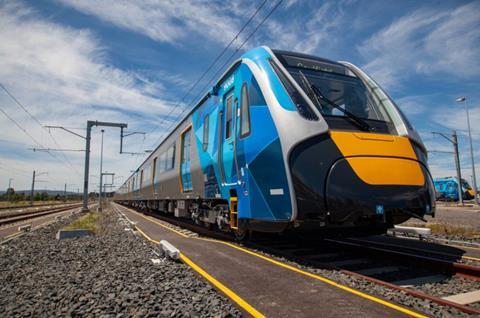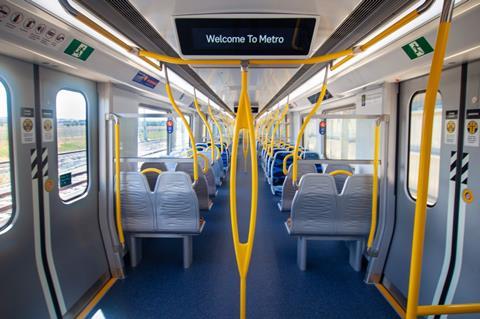
AUSTRALIA: The first of 65 High Capacity Metro Trains being built for the Melbourne suburban network entered service on the Pakenham line on December 26.
The seven-car EMUs are being supplied by the Evolution Rail consortium of Downer, CRRC Changchun Railway Vehicles and Plenary Group under a PPP contract awarded by the Victoria state government in November 2016. The A$2·3bn package also includes 35 years of maintenance at a purpose-built depot at Pakenham East and a light servicing facility at Calder Park.

Based on CRRC’s Type A metro car family, the 1 600 mm gauge EMUs are being assembled at Downer’s Newport facility in western Melbourne, with Chinese bodyshells and more than 60% local content. According to the state government, components are being sourced from Morwell, Bendigo, Hallam and other parts of Victoria, creating jobs for more than 1 100 Victorians.
The first trains had been expected to enter service from mid-2019, but testing has taken longer than anticipated. The HCMT sets will initially be deployed on the Pakenham and Cranbourne lines to the southeast of Melbourne, which have been upgraded to accommodate them. Following the opening of the cross-city Metro Tunnel in 2025, they will run through to the Sunbury line in the northwest, where a similar package of power supply improvements and platform lengthening is now underway. All three routes are to be equipped with high-capacity signalling, which will allow trains to operate through the tunnel at headways of 2 to 3 min.

Described as the first new design of suburban EMU for Melbourne since the Alstom Xtrapolis EMUs ordered by Connex began entering service in 2002, the seven-car trains are through-gangwayed from end to end, with improved seating and more handholds than existing stock. Moving from pairs of three-car units to a fixed seven-car formation provides around 20% more capacity per train. Each unit includes priority seating throughout the set, with 14 wheelchair spaces adjacent to accessible boarding doors as well as more space for bicycles and prams. Dynamic route maps and passenger information displays provide real-time information, while enhanced CCTV is also installed.



